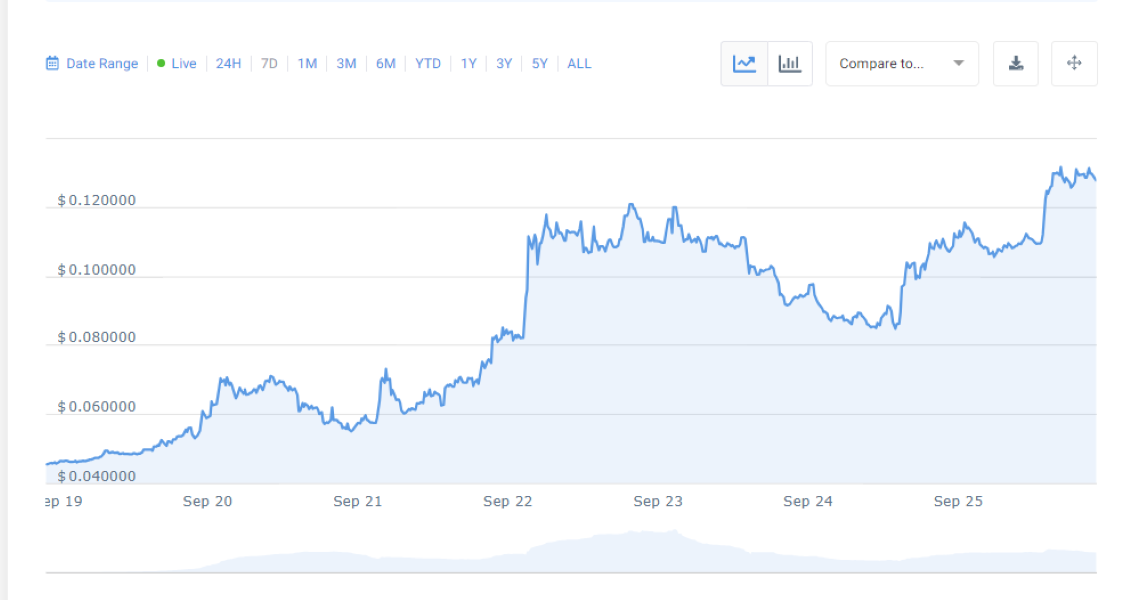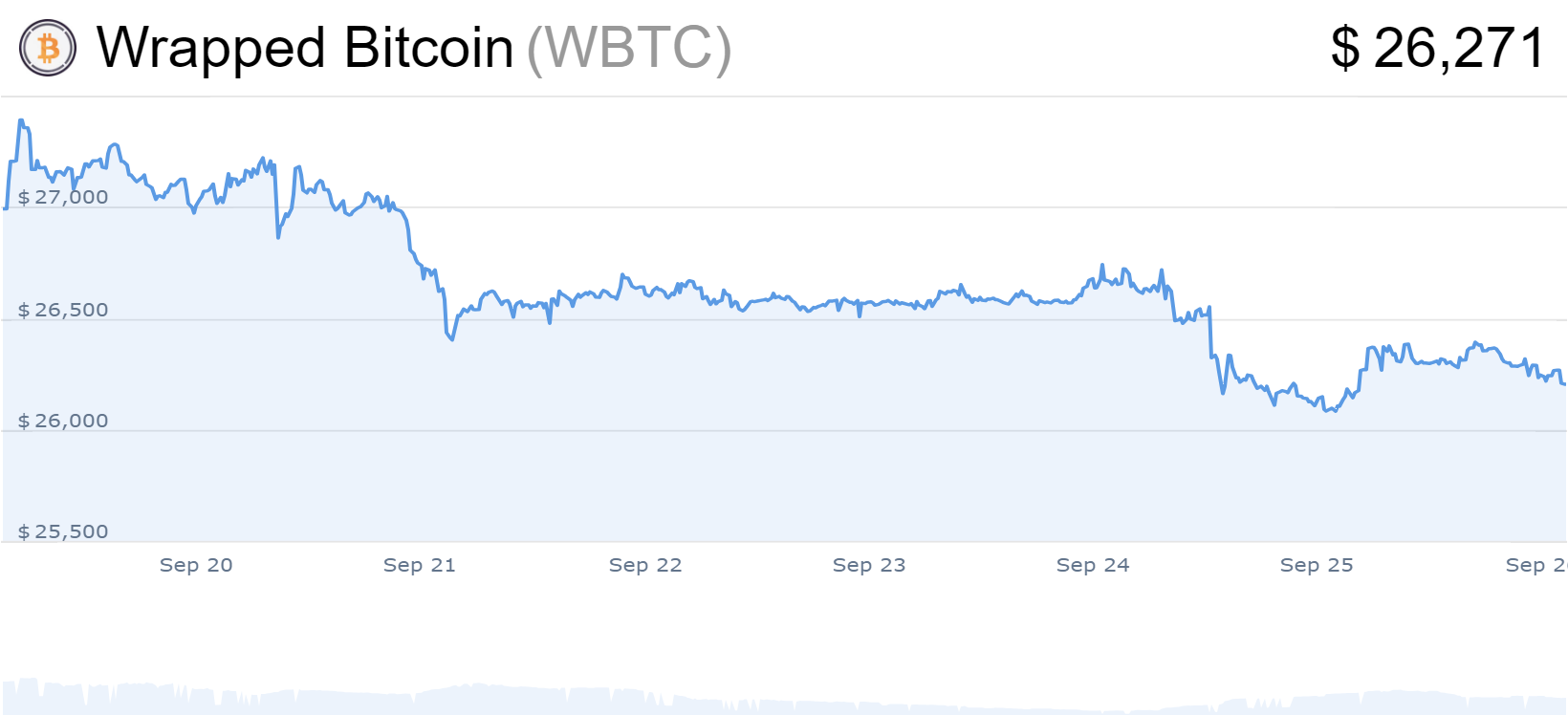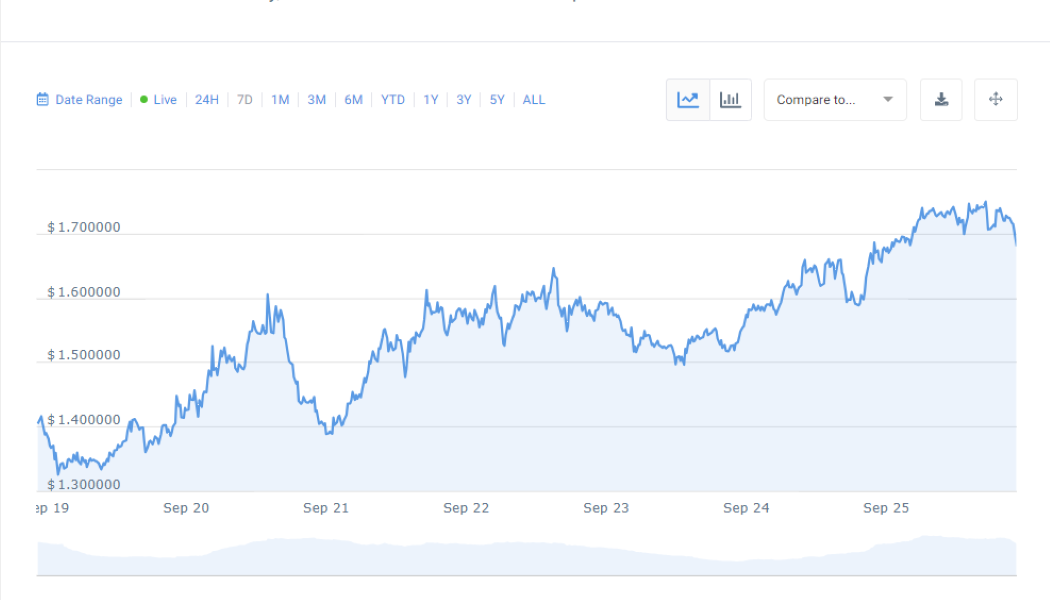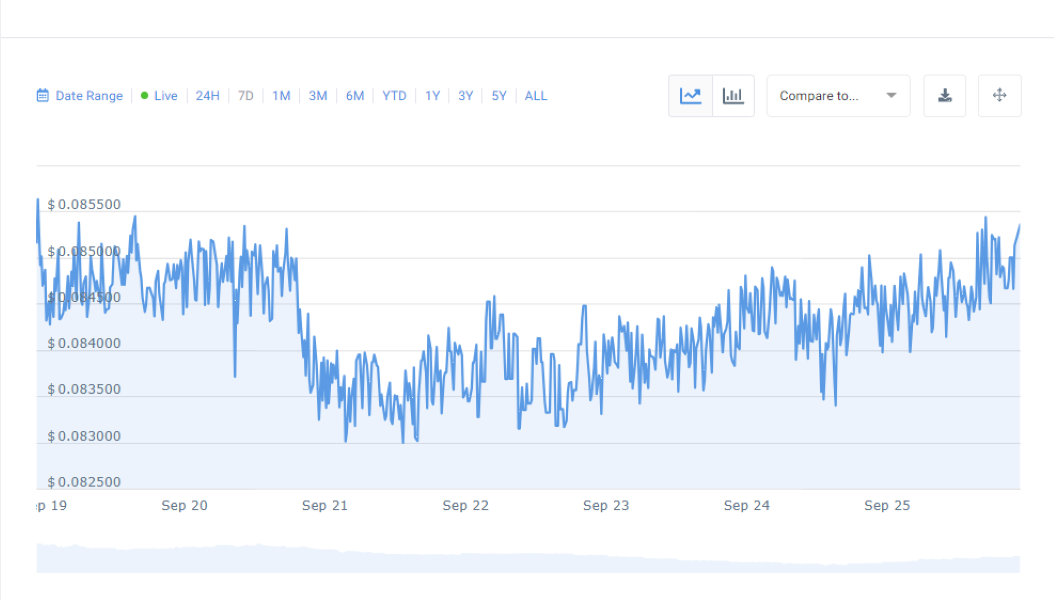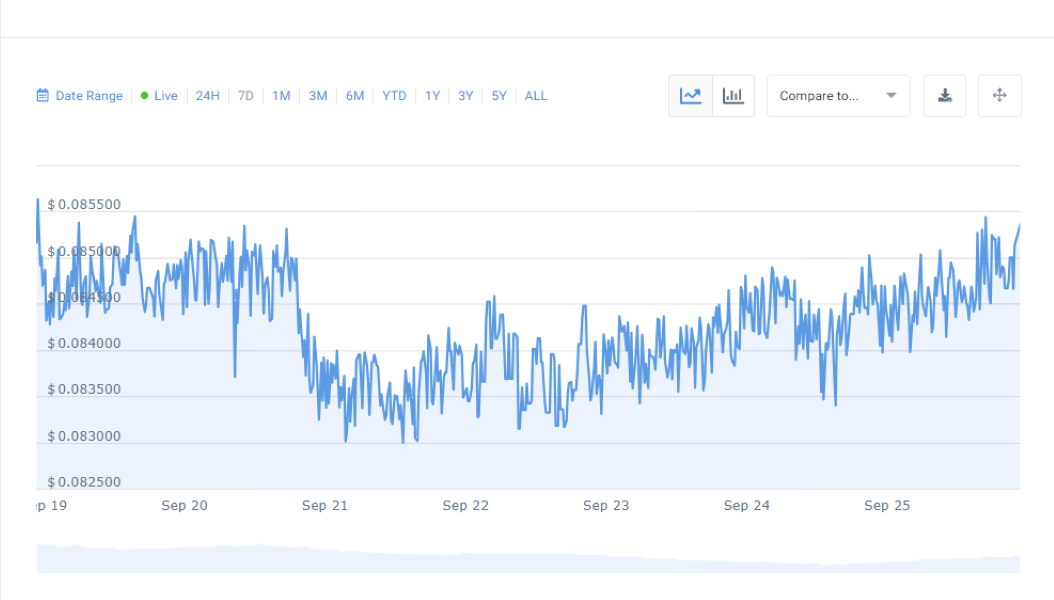Join Our Telegram channel to stay up to date on breaking news coverage
Building upon our previous conversation regarding the best altcoins for investment, we present an updated selection of assets for your portfolio.
Cryptocurrencies, including Bitcoin, exhibited marginal gains on Tuesday amid rising bond yields and ongoing deliberations surrounding interest rates and Federal Reserve policies. Bitcoin, for instance, recorded a modest 1% increase in the past 24 hours, reaching $26,250.
These circumstances emphasize the potential impact on investment decisions within the cryptocurrency space. Consequently, investors may increasingly explore more cost-effective cryptocurrency investment alternatives that offer growth potential as they navigate these uncertainties.
7 Best Altcoins to Invest In Right Now
Established and widely recognized cryptocurrencies typically command higher prices and are currently undergoing an upward tick.
This scenario could open up enticing investment prospects within alternative tokens. Here are the top seven alternative tokens worth considering for inclusion in your portfolio.
1. Loom Network (LOOM)
Loom Network operates as a Platform-as-a-Service (PaaS) situated atop the Ethereum blockchain, primarily focusing on facilitating the execution of large-scale decentralized applications (DApps).
Its core mission is to enable application developers to leverage smart contracts to access increased computing resources as needed. Furthermore, it aims to maintain cost-efficiency for specific tasks, such as user onboarding trials or applications not requiring full blockchain security.
A prominent feature of Loom Network is its adaptability in customizing consensus mechanisms to align with specific application requirements and threat models. This adaptability empowers developers to tailor their DApps to their precise needs, diverging from a one-size-fits-all blockchain security model.
We've just published a new quick start tutorial for the zkLoom Testnet!
Check it out and let us know what you think 🙂https://t.co/0qsO6DOoBu
Please drop by our dev chat on Telegram https://t.co/0xFeMA13WE if you have any feedback or get stuck ⁉️
— Loom Network (@loomnetwork) September 5, 2023
Loom achieves scalability for decentralized applications by utilizing Delegated Proof of Stake (DPoS) sidechains, all while preserving the security of the Ethereum mainnet.
Another distinct characteristic is its capacity to interface seamlessly with off-chain APIs developed by third parties. This capability significantly broadens the range of functionalities available to DApps while maintaining connectivity with external data sources.
2. Wrapped Bitcoin (WBTC)
Wrapped Bitcoin is a digital asset that integrates the Bitcoin (BTC) into the Ethereum (ETH) blockchain. This integration is achieved using the ERC-20 standard, a foundational protocol for Ethereum tokens.
Through this standard, WBTC seamlessly becomes part of the Ethereum ecosystem. This system includes decentralized exchanges, crypto lending platforms, and other decentralized finance (DeFi) applications supporting ERC-20 tokens.
The core purpose of WBTC is to provide users with access to the advanced DeFi capabilities of Ethereum while tapping into the liquidity associated with Bitcoin.
This approach simplifies operational requirements for exchanges, wallets, and payment services. Instead of managing separate nodes for ETH and BTC networks, they can efficiently support WBTC operations with just an Ethereum node.
WBTC empowers users to leverage the value of their BTC holdings on the Ethereum blockchain. It enables trustless and decentralized BTC trading and allows users to engage with the expanding DeFi ecosystem.
3. Worldcoin (WLD)
The Worldcoin project is driven by a mission to establish the world’s most extensive identity and financial network, positioned as a public utility with equitable ownership as a primary goal.
Central to their system is the “World ID,” a global identity network designed to safeguard user privacy by utilizing zero-knowledge proofs, all while enabling the verification of individual identity online, often referred to as “Proof of Personhood.”
To achieve their objectives, the project relies on the WLD token. This token serves as a utility token with governance features, aiming to empower users by giving them a voice in shaping the protocol’s future.
The WLD token operates as an ERC-20 token on the Ethereum network, and individual user grants are distributed on the Optimism Mainnet. Consequently, the expectation is that most WLD transactions will occur on the Optimism network.
4. Tron (TRX)
TRON (TRX) represents a decentralized blockchain-based operating system meticulously developed by the Tron Foundation.
The TRON software ecosystem supports smart contracts, various blockchain systems, and decentralized applications (dApps). It employs a transaction model akin to Bitcoin’s (BTC) or UTXO. Transactions are recorded transparently on a public ledger, enabling users to trace the history of operations easily.
The primary mission of this platform is to establish a decentralized Internet and provide a versatile platform for developers to craft dApps. In this regard, TRON positions itself as an alternative to Ethereum.
An inclusive aspect is its openness, allowing anyone to participate in dApp development on the TRON network and receive digital assets as compensation for their contributions.
The #TRON Network is empowering millions.
Below are just a few examples of how those across the globe leverage our blockchain. 👇
☑️ payroll
☑️ supplier payments
☑️ retail transactions
☑️ remittancesMore from @Benzinga: https://t.co/2KZGdlJcfi pic.twitter.com/JHafD36qxz
— TRON DAO (@trondao) September 25, 2023
TRON’s vision centers around enabling direct connections between content creators and their audiences, sidestepping the centralized intermediaries that typically dominate streaming services, app stores, and music platforms. The overarching goal is to minimize commission losses experienced by creators.
5. Bitcoin BSC ($BTCBSC)
Bitcoin BSC, a recently emerging cryptocurrency project, has garnered attention for its distinct approach to addressing Bitcoin’s challenges. The project allows investors to participate in Bitcoin before its notable price surges. It seeks to improve the efficiency of Bitcoin’s Proof-of-Work consensus mechanism.
The presale of Bitcoin BSC, which commenced on September 5, has garnered substantial interest within its initial 24 hours, raising $25,000. Currently, the project has amassed over $5 million in funds.
This early fundraising momentum suggests a growing interest in Bitcoin BSC, which could benefit its trading once it becomes available on cryptocurrency exchanges.
In terms of tokenomics, Bitcoin BSC closely mirrors the original Bitcoin. It boasts a total token supply of 21 million, with 29% (equivalent to 6.125 million tokens) allocated to a two-stage presale.
Exploring the benefit of #BitcoinBSC on the BNB Smart Chain! 🌐
Built on #Ethereum's secure code, it offers robust security and smart contract capabilities, making it a game-changer for the #CryptoCommunity. 🔒 #BNBSmartChain pic.twitter.com/eulGIV9x89
— Bitcoinbsc (@Bitcoinbsctoken) September 25, 2023
The token’s presale price has been deliberately set at $0.99 for both stages, echoing the initial offering of Bitcoin in 2011. The primary goal is to sell 4 million presale tokens, with the remaining 2.125 million tokens slated for the second presale round. Following the conclusion of the presale, Bitcoin BSC plans to launch on Uniswap, reserving 2% of the total supply for DEX liquidity.
6. Polkadot (DOT)
Polkadot operates as an open-source protocol with the primary objective of fostering interoperability among diverse blockchains. Positioned as a layer-0 metaprotocol, it is the foundational layer for a network of layer 1 blockchains, known as parachains.
These parachains, developed using the Substrate framework, are customizable blockchains tailored to specific requirements. An inherent feature of Polkadot is its capability to facilitate the seamless transfer of various data and assets across different blockchains, extending beyond the confines of tokens.
This functionality aligns with its mission to establish a decentralized internet of blockchains, commonly referred to as Web3.
Polkadot’s governance model is structured to allow for autonomous and forkless updates to its codebase, contingent on the consensus of its token-holder community. This governance approach ensures the protocol’s long-term adaptability and security.
1/ The #PolkadotRoundup brings you the very latest from around the Polkadot ecosystem.
Here are the key news and announcements from the many talented teams building in the Polkadot ecosystem 🧵⬇️ pic.twitter.com/Y3wEtXwD9H
— Polkadot (@Polkadot) September 25, 2023
A salient attribute of Polkadot is its sharded multichain network structure, which enables parallel processing of transactions across multiple chains, or “parachains.” This parallel processing significantly enhances the network’s scalability, a crucial aspect for efficiently handling a substantial transaction volume.
7. Litecoin (LTC)
Litecoin (LTC) is a cryptocurrency that facilitates fast, secure, cost-effective payments. This is achieved by harnessing blockchain technology. Litecoin was created based on the Bitcoin (BTC) protocol.
However, it comes with several notable distinctions. These differences encompass using a different hashing algorithm, a specified maximum supply, and block transaction times, among other factors.
Litecoin boasts an impressive block time of just 2.5 minutes. It also offers exceptionally low transaction fees, making it a practical choice for micro-transactions and point-of-sale payments.
#Litecoin is the ideal cryptocurrency for the developing world. 🌍
🔵 Cheap fees
🔵 100% uptime over 11 years
🔵 On every major crypto platform
🔵 Fungibility privacy via #MWEB
🔵 Reliable & TrustworthyThe longest running and time-battled altcoin. $LTC ⚡ pic.twitter.com/RFYNKX7bb7
— Litecoin (@litecoin) September 15, 2023
Transactions on the Litecoin network typically achieve confirmation within mere minutes, and the associated transaction fees are nominal. Consequently, Litecoin emerges as an attractive alternative to Bitcoin, especially in regions where transaction costs are pivotal in choosing a cryptocurrency.
Read More
Best Wallet - Diversify Your Crypto Portfolio
- Easy to Use, Feature-Driven Crypto Wallet
- Get Early Access to Upcoming Token ICOs
- Multi-Chain, Multi-Wallet, Non-Custodial
- Now On App Store, Google Play
- Stake To Earn Native Token $BEST
- 250,000+ Monthly Active Users
Join Our Telegram channel to stay up to date on breaking news coverage


